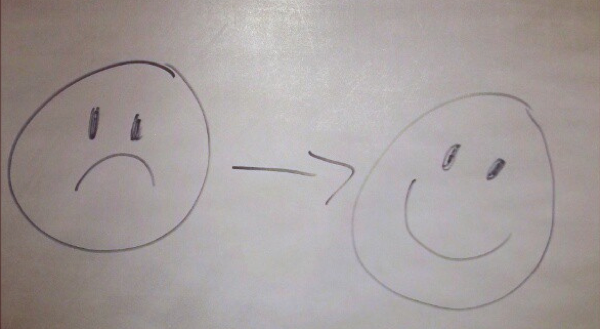
Last week I read a great blog post from the CEO of FullContact, Bart Lorang, about his company’s experience providing customer support.
And then on Friday night I had one of the worst experiences ever at Pipa Restaurant in Halifax. I’ll never be going back there.
Both the blog post from Bart, and the horrible experience at Pipa, had me reflecting on the weekend about the huge importance of customer support to the success of any business, and how we do things at GoInstant.
I look at customer support as the ultimate learning experience, particularly early on in your company’s existence or with a new product. There’s no better way to understand how customers are doing than by handling customer support. Even if you did a lot of validation before launching (as you should!), the minute you put your product into people’s hands, they’ll do all kinds of interesting (read: crazy) things. You’ll probably be surprised and confused at how they’re using your product. Some features will get a ton of use, others will get very little; and I bet that you would have predicted the opposite.
Most often, you just don’t know what people are going to do when they get their hands on your product. And customer support is the learning engine that can drive the company forward in terms of resolving usability issues, fixing bugs, prioritizing features, increasing virality/word-of-mouth and more.
Since GoInstant is a platform for building realtime applications, we never really know what types of apps people are going to build. And our users have a broad range of experience with JavaScript, AngularJS and the other technologies we use. Some get it right away and are off to the races, others have a bigger learning curve. With both types of users (and everyone in between), customer support helps us learn what they were expecting, and how we can make things better. When a user shares code with us (of their app + GoInstant), we can understand their thought process, and it almost always leads to revelations on our side of how we could do things better.
Most of our support is very technical, and as a result, we rotate developers in ERT (Emergency Response Teams) weekly. There are usually 3 developers per ERT. These guys are responsible for handling all customer issues that arise. We have a couple guys that serve as point people to manage the ERTs (including myself), but ultimately the goal is to get our developers –who are building the product– as much face time as possible with customers.
Customer support is the ultimate learning experience. This is especially true early on. And everyone on your team should be learning firsthand about what’s working and what’s not working, so they can make better decisions going forward. If you put barriers up between your team and customers you’ll lose valuable information (through broken telephone), and you won’t give everyone on your team the “up close and personal” experience of handling customers. That experience should remind everyone at your company about who they’re working for (users and customers!) and why they’re there. It should help you figure out the ideal customer for your business (so you’re not trying to boil the ocean and please everyone).
Customer support can be humbling and occasionally painful, but if everyone in your organization participates you’re going to be better for it. Everyone will learn a ton.
Photo courtesy of poolski.
 Founding Partner at
Founding Partner at 